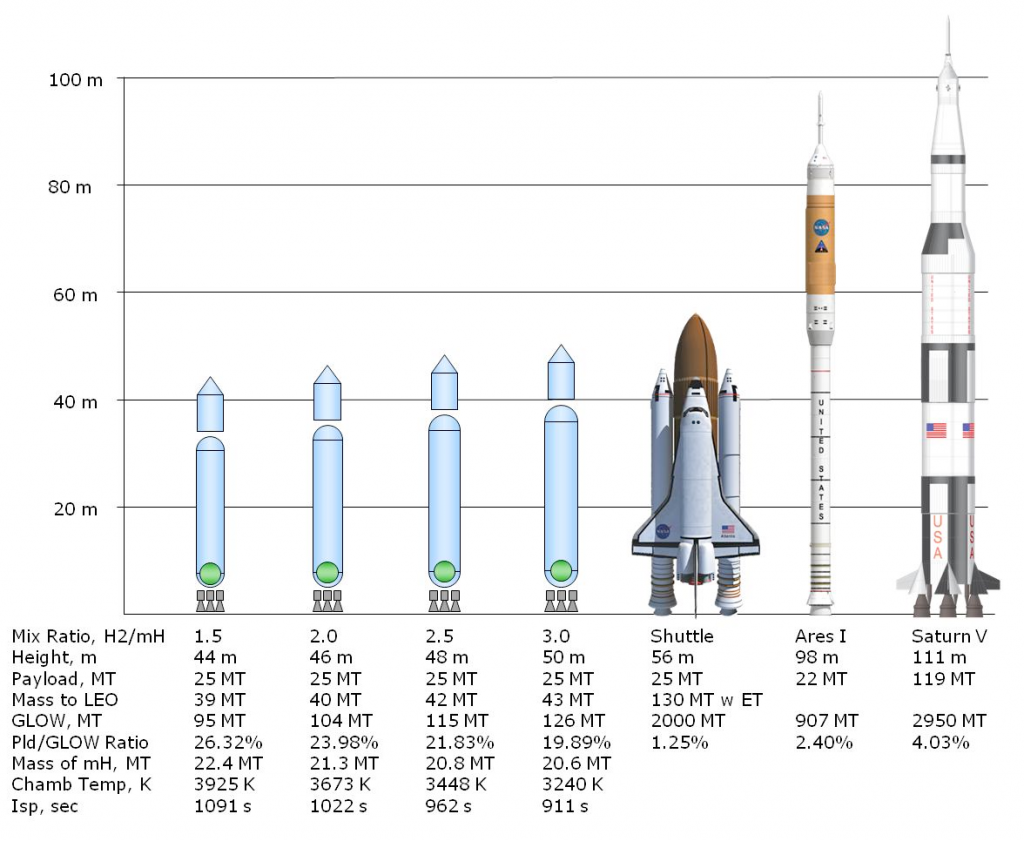According to theory, if you put hydrogen under enough pressure it will form itself into a solid metal. Metallic hydrogen would have a density a bit greater than water and would be an electrical superconductor. The planet Jupiter should theoretically have an “ocean” of metallic hydrogen surrounding a rocky core. The difficulty is that the amount of pressure required is astonishingly high, higher than can be produced by man except under a few rare laboratory conditions.
On one hand, metallic hydrogen is a scientific curiosity. On the other hand, there is just barely the possibility that metallic hydrogen is metastable. This means that once formed, when the pressure is removed, it will remain a metallic solid. You will have turned hydrogen gas into a chunk of room-temperature metal.
“Metastable” of course means that it is not *entirely* stable. That chunk of metal might be happy to remain a chunk of metal for a billion years. Or someone might whack it with a hammer, zap it with a laser, nuke it with gamma rays, or yell harsh language at it, which would be enough to cause it to unravel itself back into regular hydrogen. Problem is, nobody is quite sure *if* metallic hydrogen is metastable, and, if so, how twitchy it would be. And this is something you’d really want to know. Because unraveling metallic hydrogen would make one *hell* of an explosive, more powerful than anything else out there. Recomobination of hydrogen from the metallic state would release 216 megajoules per kilogram; TNT only releases 4.2 megajoules per kilo. Hydrogen/oxygen combustion in the SSME releases 10 megajoules/kilo.
If things work out just right, metastable hydrogen could revolutionize space launch and space travel. A rocket engine based on pellets of metallic hydrogen detonations could have a specific impulse of 1700 seconds. This compares really well to the 450 or so seconds you could get out of a hydrogen/oxygen rocket engine, and quite well to a solid core nuclear thermal engine like NERVA, which would have an Isp of 800 to 900 seconds. And it would do all that without the need for radiation shielding. This would make SSTO’s almost trivially easy, make trips to the moon and Mars economical.
The problems, of course, are that we don’t know if metallic hydrogen is metastable (and if so, *how* metastable), and of course we don’t have any metastable hydrogen to experiment with to determine these things.
Except… now we do. Sorta.
Observation of the Wigner-Huntington Transition to Solid Metallic Hydrogen
Ranga Dias and Isaac F. Silvera
Lyman Laboratory of Physics, Harvard University, Cambridge MA 02138
A *small*quantity of reflective metallic hydrogen has been created at a pressure of 495 gigaPascals (71,793,680 pounds per square inch, about 4.8 million atmo0spheres) in a diamond anvil. The sample was about 8 microns in diameter by 1.2 microns thick. As of the writing of that paper (published in early October), the sample was being kept under pressure at liquid nitrogen temperature. The next step is to release the pressure and see if the sample remains solid metal.
Several papers and presentations were made a few years ago describing the potential of metallic hydrogen as a rocket propellant. Given the extreme temperature produced by metallic hydrogen going *foom,* it was assumed that the reaction would be diluted with liquid hydrogen or water. This reduced Isp, but increased thrust.
